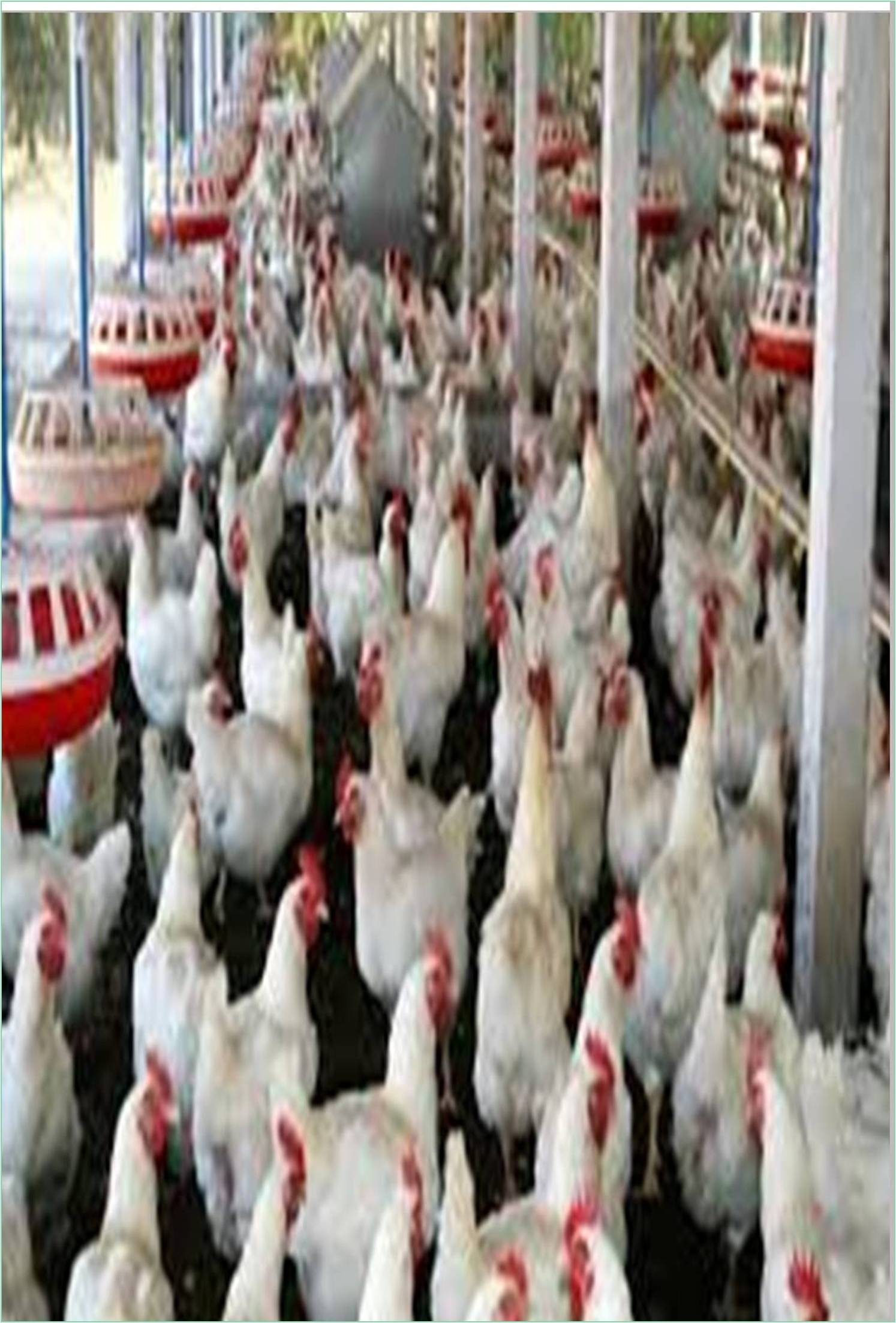



Received: 01-Aug-2022, Manuscript No. GJPFV-22-72024; Editor assigned: 05-Aug-2022, Pre QC No. GJPFV-22-72024(PQ); Reviewed: 26-Aug-2022, QC No. GJPFV-22-72024; Revised: 02-Sep-2022, Manuscript No. GJPFV-22-72024(R); Published: 09-Sep-2022, DOI: 10.15651/ 2449-1772.22.10.059
There are typically assigned sections in broiler houses for incubation. These locations might be located all throughout the house, but cardboard rings (sometimes called "chick guards") are employed to confine the chicks close to heat sources. More frequently, a section of the house is curtained off and heated before the chicks are placed there. In either case, the floor temperature of the brooder area should range from 85° to 90°F (29.4°C to 32.2°C). The temperature in the brooder is decreased by 5°F (2.8°C) per week until it reaches 70°F (21.1°C) as the birds get older. The chick guards are taken off or the curtains are lifted when they are around a week old, allowing the chicks access to the extra room in the house. Prior to allowing the chicks access to the entire home, there may be a second room in exceptionally large chicken houses that is curtained off for a few days (up to 10–14 days of age). Feeders and waterers should have plenty of room and be placed throughout the house. The first supply of acceptable litter should be at least 3 inches (7.5 cm) deep, clean for each brood, and spread out evenly. Mold-free, non-caking, non-toxic, and with large enough particle sizes to deter eating, litter must also be free of mould. For a few days, chicks are given 24 hours of light a day; after that, the amount of light is decreased. It matters how long the day will last as well as how bright it is.
Depending on whether a dwelling unit has windows or not, different lighting schemes are used. These schemes should be in accordance with the advice of significant breeders in comparable circumstances. In order to regulate how quickly chickens mature, feeding systems are frequently employed in conjunction with day-length management when raising pullets for use as commercial egg layers or meat-type breeding hens. Pullets may occasionally have their beaks clipped at the hatchery or, in rare instances, within the first week after hatching. With dim lighting, beak cutting might be postponed until later in the growing season in housing with a controlled environment. Many commercial hens of the egg-laying variety are raised in cages. Specific recommendations regarding heating, bird density, and food space are typically provided by the cage maker. The majority of commercial diets are enriched with enough nutrients to suit the needs of cage-reared birds.
The majority of the layer hens are kept in cages, so they should be relocated to these facilities at least one week prior to the start of egg production. Breeders should be given at least a week to become used to their new surroundings after moving from a growing to an adult housing, before the stress of egg production starts. When rehousing, cull birds should be removed and beaks should be re trimmed as appropriate. The right kind, size, and height of feeders and waterers should be used for the stock and the management system. Excess feed waste may be tolerated by feeders that are too shallow, too thin, or without a lip or flange on the upper edge. Impaired intake and consequently reduced performance are caused by an uneven distribution of waterers or a lack of water space. As the egg laying hens begin to lay eggs, the length of the day should gradually lengthen until it reaches a peak of 14 to 16 hours for both marketegg and hatching-egg layers. At the feed trough, there should be at least one foot-candle of light (10 lux), which is roughly equivalent to one 60-watt light bulb per 100 square feet (9 square metres), suspended 7 feet (2.1 metres) above the birds. If day length or light intensity are decreased when laying eggs, production may be affected. Smaller wattage lights put closer together, rather than larger ones dangling over the center of each aisle, will provide lighting that is more evenly distributed in cage systems of all kinds. Birds that lay eggs typically live their entire lives in cages. Although some broiler breeders are housed similarly, the majority are raised in pens with up to two-thirds slatted floors or on litter floors. There is minimal prospect of changing the available feeding and watering area for egg-strain pullets rose in cages, but monthly inspections are required to make sure feed and water are being constantly given. It is getting harder and harder to make specific recommendations for feeding and watering space with the popularity of cup-waterers and the many kinds of automatic feeding systems. Based on recommendations from equipment manufacturers, key breeders, thorough observation, and prior experience as to what works best, decisions must be taken on the ideal floor space and feeding and watering productivity.